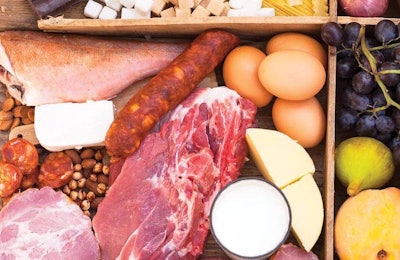
Despite achieving good growth rates in 2018, forecasts point to a slowing of expansion in the output of meat, milk and eggs in Zimbabwe this year, as well as early warnings of another major drought.
Government policy throughout the past 10 years has been successful in restoring the country’s self sufficiency in food, reports Daily News. All of Zimbabwe’s requirements for meat and eggs have been met by domestic producers since 2012, according to the Livestock and Meat Advisory Council (LMAC), and the egg and milk sectors achieved record increases in output over the first three quarters of last year. It was hoped that public support for private investors in the dairy industry would help that sector to be self sufficient by 2022.
Meat production this year now looks to be “subdued,” according to the LMAC. It blames this situation on a shortage of foreign currency, rising production costs and more regulations. A confounding factor is the country’s high inflation rate, which had eroded consumers’ purchasing power, leading low-income families to regard meat and eggs as luxury goods.
Feed shortages reported
Efforts to increase milk production in Zimbabwe’s eastern province of Manicaland are being hampered by a lack of livestock feeds, reports The Herald.
One farmer blamed the situation on a shortage of foreign currency, which is significant as the sector relies on imported products, including livestock feeds, supplements and vaccines.
Another producer said his beef cattle are suffering as a result of drought, which is also creating shortages of feed, and leading to price rises.
A drought in 2015-16 severely impacted crop and livestock production in southern Africa.
In November 2018, the Food and Agriculture Organization (FAO) of the United Nations announced it had begun preparing for another El Niño-related drought in 2018-19, which looked likely to adversely affect the upcoming crop-planting season in southern Africa.
While the 2018 grain harvest in Zimbabwe was well above the five-year average and carryover stocks were “large,” FAO warned in early January that current-season harvests could be below average due to lack of rainfall at the critical time, particularly in the west of the country.
In addition to the unfavorable weather conditions, FAO warned that liquidity constraints and foreign currency shortages have reduced the availability of agricultural inputs to Zimbabwean farmers.
FAO forecast that this combination of adverse events could put 2.4 million people in the country in need of humanitarian food assistance. During the drought-hit years of 2015 and 2016, this figure was between 3 million and 4 million.

















